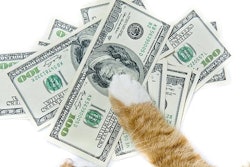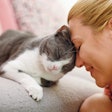
As I write this, the Association for Pet Obesity Prevention (APOP) is marking World Pet Obesity Awareness Day. “Celebrating” doesn’t seem the right word to use in this context: In the U.S. alone, 59% of dogs and 61% of cats were classified as overweight or obese in APOP’s State of Pet Obesity Report in 2022.
The organization has launched its 2023 survey for pet owners and veterinarians to measure the state of pets’ weight in the U.S., and it’s difficult to be optimistic that the results will show any improvement. In fact, it may indicate even higher rates of pet overweight and obesity, because that’s been the trend since APOP first started fielding the survey in 2007. (The survey is open through December 31, 2023.)
The emotional toll of overweight pets
One reason for continually increasing pet overweight/obesity rates — and the main reason for the awareness day — is lack of pet owner understanding of the problem. This is also an ongoing trend in APOP’s surveys over the years. In the 2022 survey, nearly one-third of owners of overweight or obese pets mistakenly believed their pets had a normal or ideal body condition, despite veterinary assessments to the contrary.
For pet owners who are aware that their pets are not at a healthy weight, the situation can take an emotional toll, raising significant concerns. Purina Pro Plan Veterinary Diets recently conducted its own survey of more than 600 U.S. owners who identified their dogs as being overweight, and these owners report high levels of anxiety about it. Specifically, 88% agreed their dogs’ body condition concerned them, and 92% agreed weight loss would be beneficial, according to a Purina press release.
Yet, as anyone who’s owned an overweight pet can attest, facilitating that weight loss can be quite difficult, partly because of those emotional implications. The survey found:
- 75% of owners agreed they feel guilty when their dogs seem hungry.
- 67% agreed food is a primary source of their dogs’ happiness.
- 67% agreed they bond with their dogs by feeding them treats and don't want to lose that bond.
- 54% agreed they feed their dog more food, table scraps or treats when their pet begs for them.
Can new pet food labels help?
The Purina press release recommends owners work with their pets’ veterinarians to develop a sound weight-loss strategy for the overweight dogs. But that’s also often easier said than done. In the APOP 2022 survey, only 49% of respondents reported that their veterinary professionals discussed their pets’ ideal or healthy weight during an annual appointment. “This figure has consistently been 46% to 53% during the past decade of surveys,” APOP said in a press release.
I have personal experience with this. My cat — Deacon, the 16-year-old wonder — was a chow hound until a few years ago, and my family and I found keeping him at an ideal weight nearly impossible, despite feeding him weight-control diets, closely apportioning the food and playing regularly with him. I have to confess that he always carried a pound or two more than was healthy. Yet I often had to broach the subject of his weight during his veterinary checkups, and multiple vets (at multiple clinics over the years) didn’t seem to show much concern.
I don’t mean to portray these veterinarians as uncaring; they were all very compassionate, skilled, professionals. And I certainly don’t mean to blame vets for the pet overweight/obesity situation, because I know many do try to address pets’ weight with their owners. I just think that some vets have so many other issues to consider in each appointment, looking at the pet’s overall health, that weight sometimes becomes secondary — or, despite their best efforts, owners just don’t want to hear it. It’s similar to medical doctors traditionally not addressing patients’ weight or nutrition for so many years, unless or until a health problem arose, or patients not wanting to make any diet or lifestyle changes.
The medical profession, and people, seem to pay much more attention to nutrition and weight now, and I believe that’s happening with more veterinarians and pet owners, too, judging by the Purina survey. But any assistance vets can get from organizations like APOP and from the pet food industry should be a huge help. The new pet food label statements that will be coming on the market soon may lend a hand, too, by providing more easily understood information to pet owners about just how much they’re feeding their pets.
For better or worse, I no longer have to worry about Deacon being overweight; in fact, due to him aging and developing digestive issues, we now fret about him continually losing weight. We free feed him (a veterinary diet), and while he’s the stereotypical finicky cat, eschewing most treats, he gets as many dabs of hairball gel as he wants. He loves that stuff and begs for it, and like many owners, I just can’t resist.

















